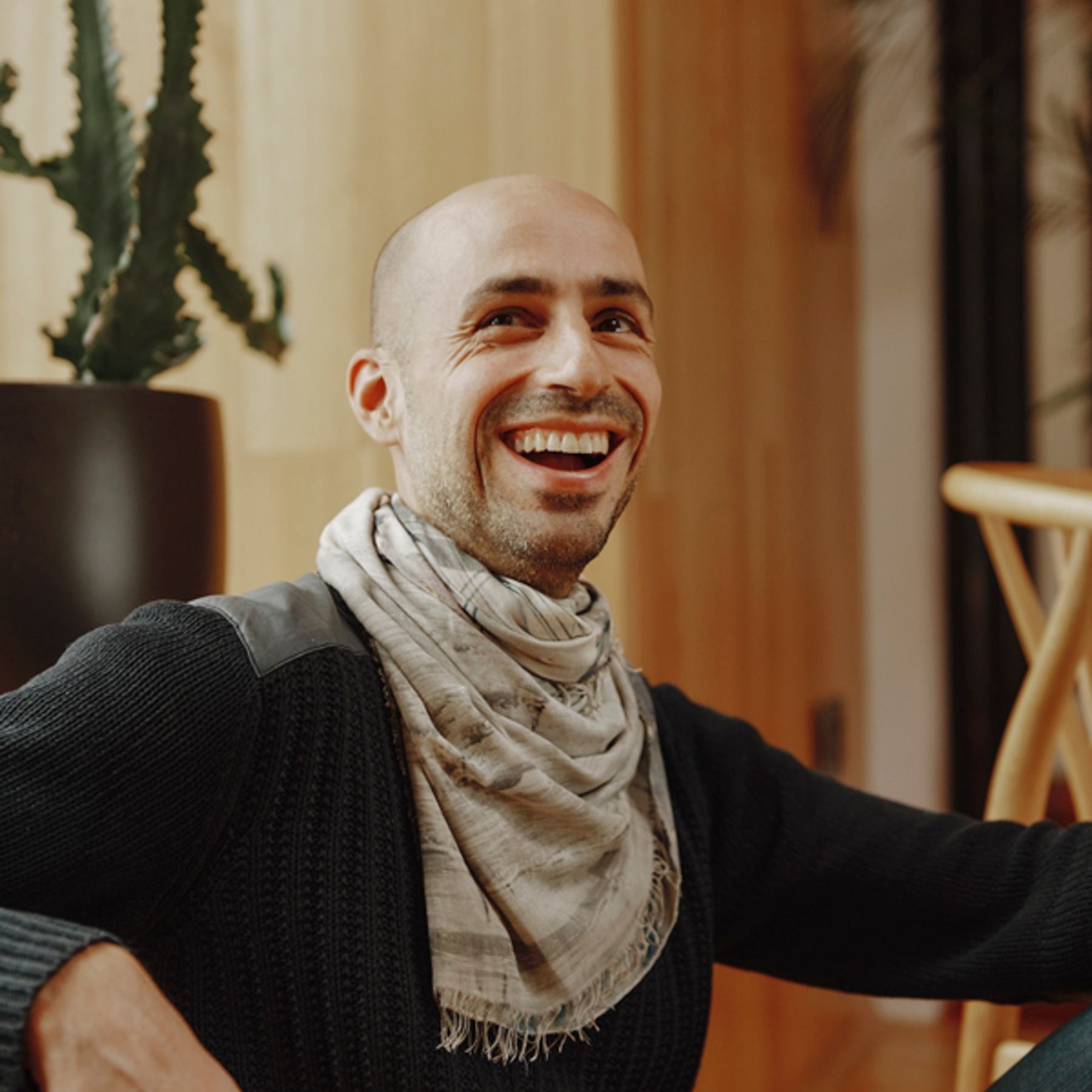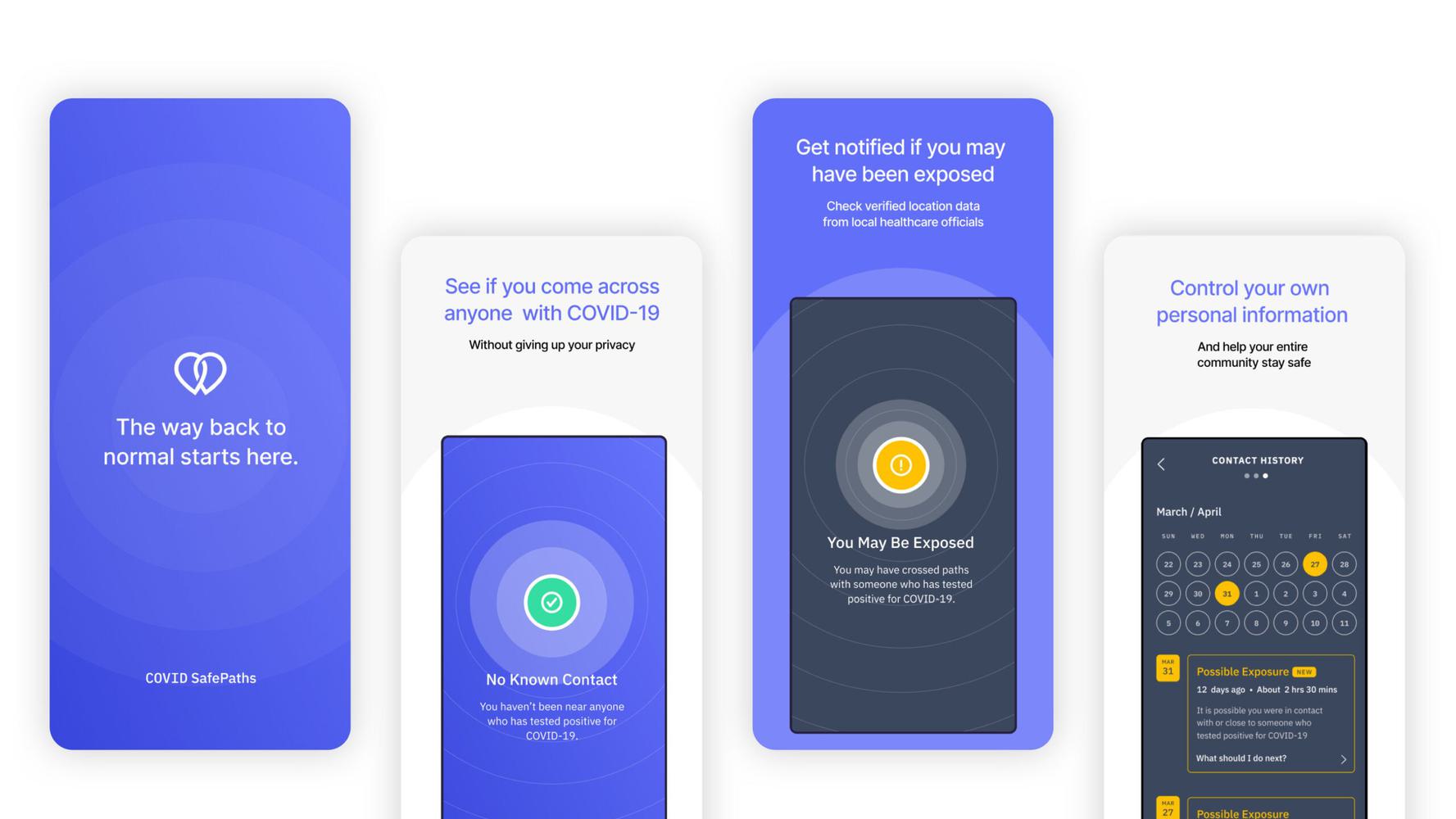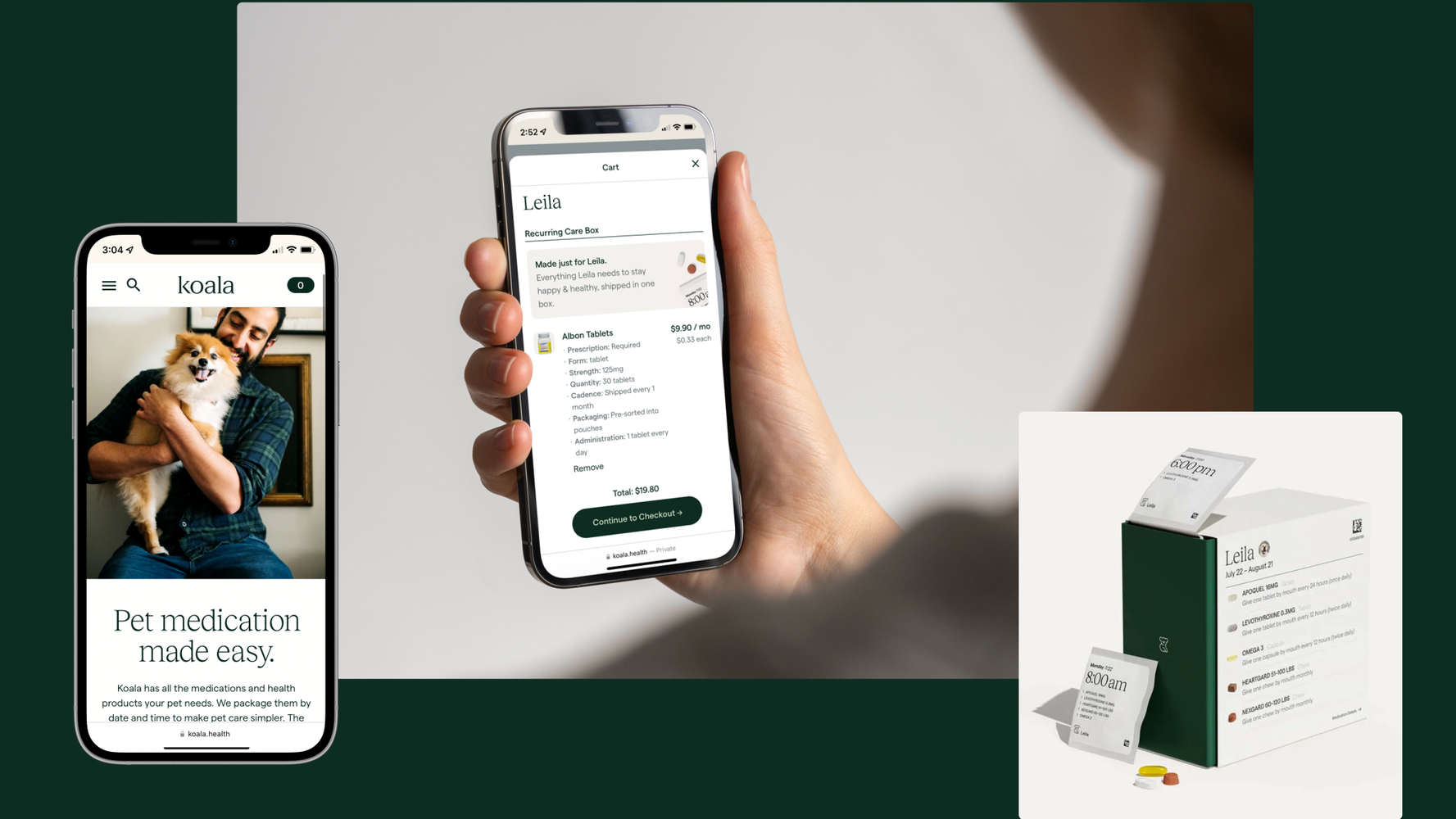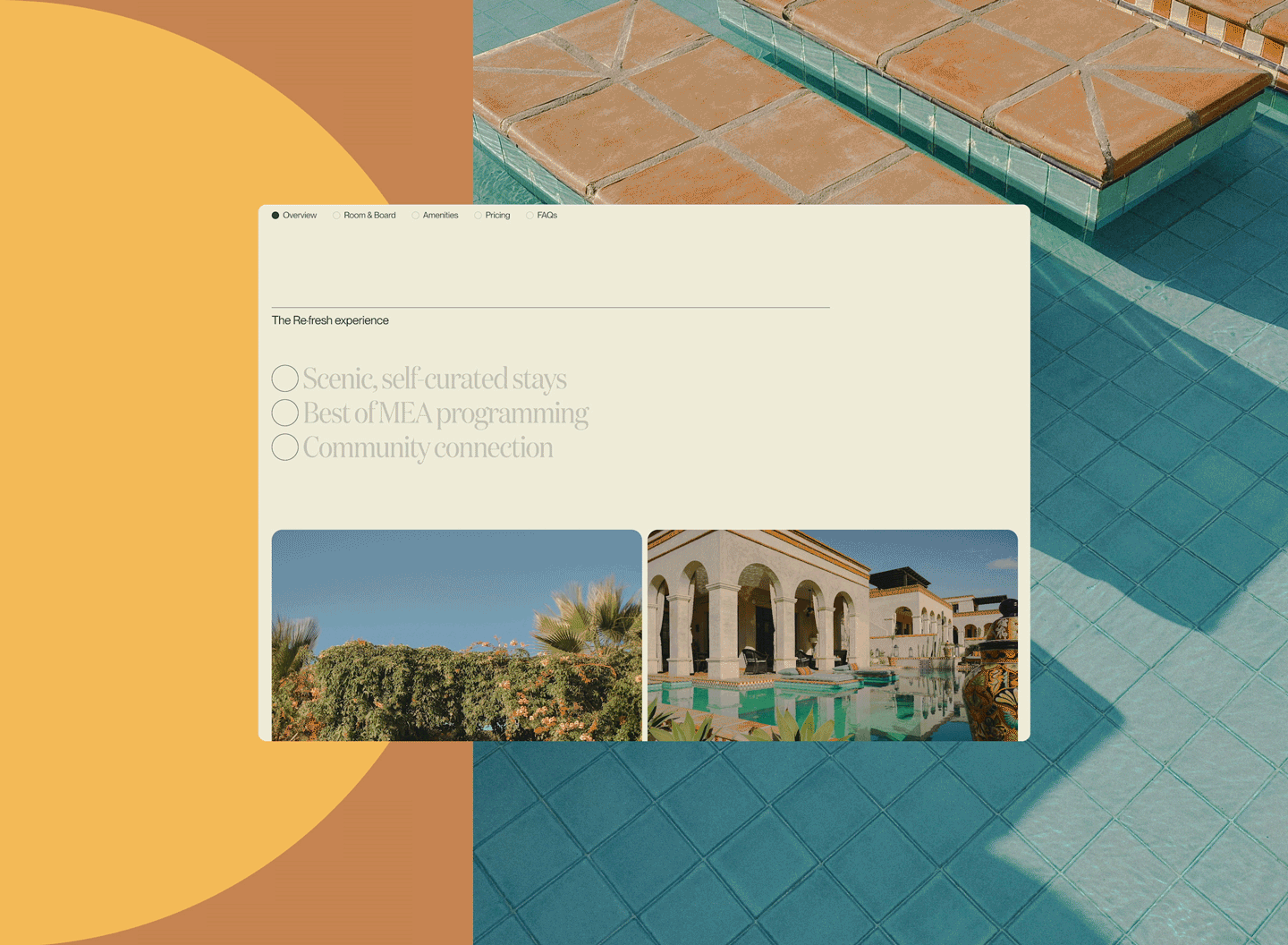One of the fastest ways to reach consensus and inspire action is for everyone to see a vision for where we’re heading. Here’s how it helped unite a huge group of volunteers who had never worked together before.
As soon as the pandemic got really real—when it forced us to shutter the Upstatement office and start working from home—we huddled to ask ourselves: What can we do to help?
Our team quickly filled a document with ideas and circled one in red pen: effective contact tracing. At the time, we couldn’t have imagined that we’d play a role in launching the very first tracing product in the App Store.
Before we tell you about that, we should probably introduce ourselves.
👋 Hi, Upstatement here! We build digital brands & products. This is the second story in a three-part series about products we’ve designed and launched to help contain COVID-19.
- COVID Protocols: Helps doctors make life-saving decisions by putting fast-changing best practices in the palm of their hand. In association with Brigham & Women’s Hospital. Read more about it here.
- PathCheck: A privacy-first contact tracing app that could help us flatten the curve and get back to normal. In association with MIT, Path Check Inc., and others.
- Zero: Think of it like Yelp for COVID-19 safety. Find the local businesses that are doing the most to keep you safe. When you have to go out, do it with confidence. In association with many others.
It’s been an honor to play even a small role on these and other projects associated with the effort. Here’s the story behind our collaboration with visionaries from MIT, TripleBlind, and more.
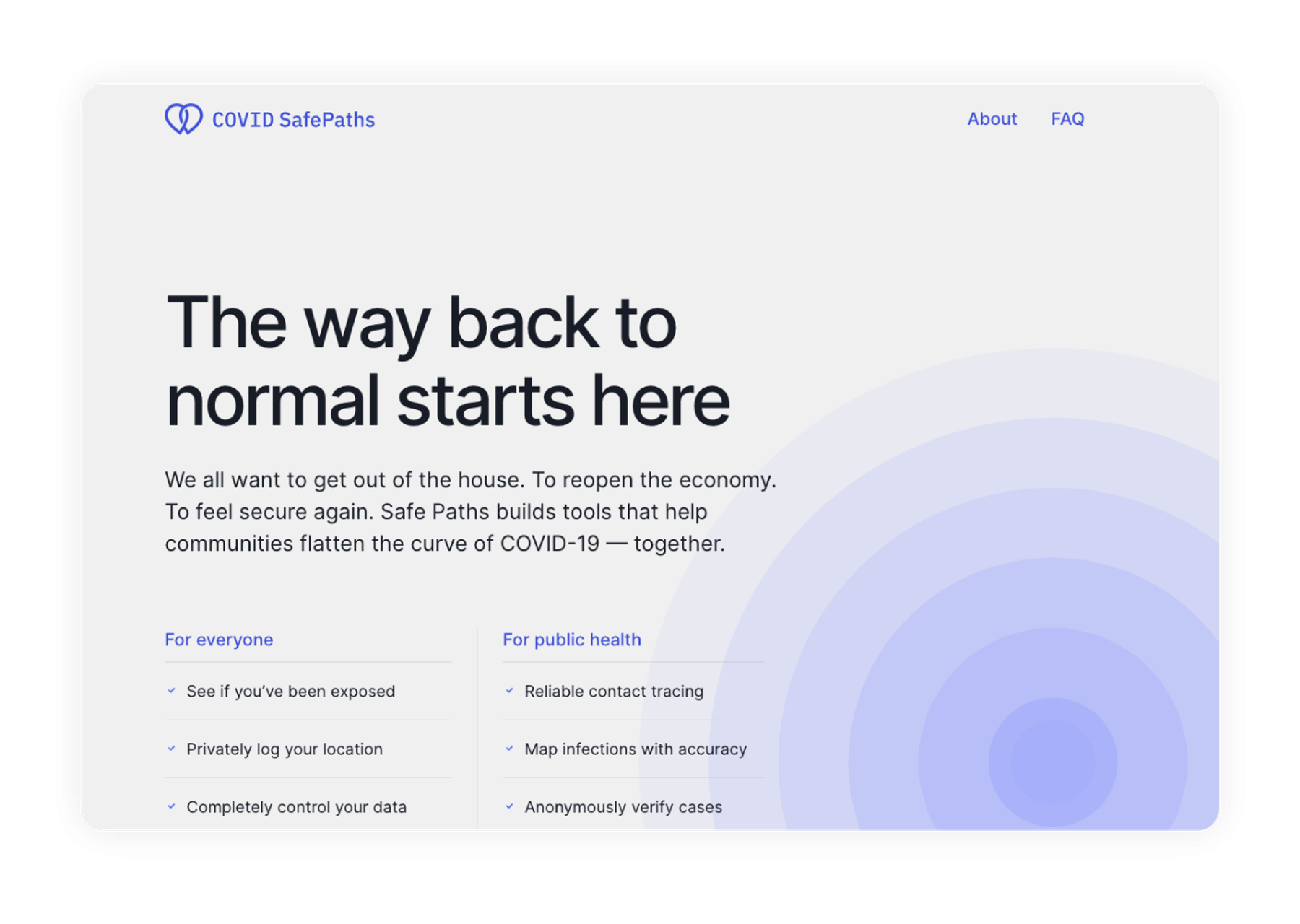
⚠️ The Problem: How to design a privacy-first contact tracer
What if our phones could alert us when we might have been exposed to someone with COVID-19? This isn’t a fantasy. It’s exactly what Singapore did with an app called TraceTogether and it’s the basis behind a joint effort by Apple & Google.
Once we flatten the curve, contact tracing might be our best tool for getting back to normal. Sounds great, but what is contact tracing exactly?
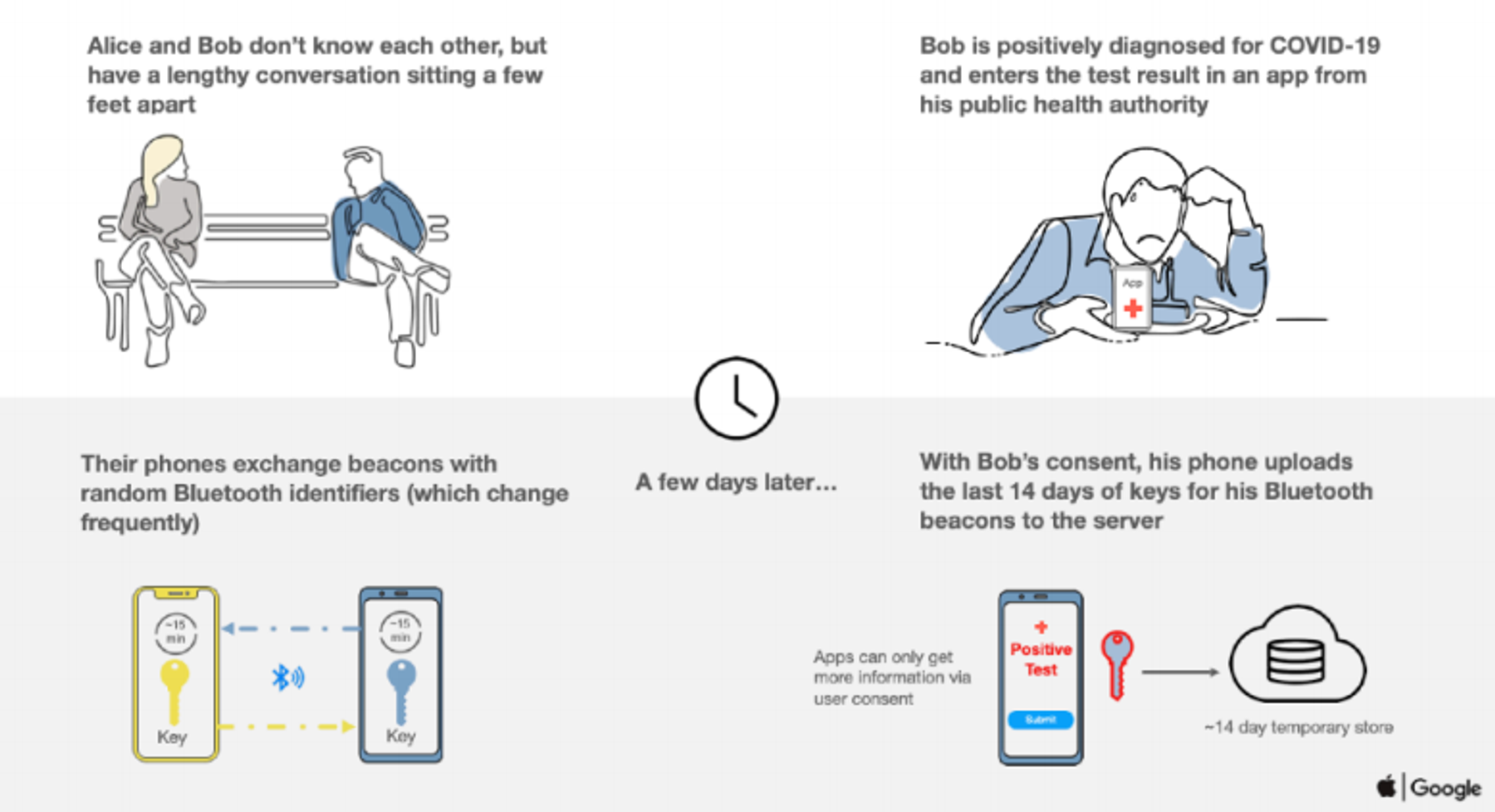
Here’s the deal: If you get diagnosed with COVID-19, a doctor will ask you to remember everywhere you’ve been in the past two weeks so they can trace others who might have been exposed and ask them to self-quarantine. It’s a tried-and-true public health technique to make communities safer.
Trouble is, our memories are terrible. But our phones, they never forget. They can watch where we’re going all the time (also: creepy—we’re getting to that). This technique played a big role in keeping the numbers down in South Korea and Singapore with the use of TraceTogether.
It’s kind of scary, too. We don’t want a surveillance state. And nobody should be forced to send their personal data to the government.
💬 The Story: Rallying a passionate group of volunteers
That’s where Ramesh Raskar (MIT Media Lab) and his team come in. They’ve developed a way to trace your path without giving up your privacy. Their solution is so inspiring that hundreds of volunteers showed up to help the open source effort.
We actually found out about it when someone from our team posted an early PathCheck (formerly known as Safe Paths) tweet. Intrigued, we searched everywhere for an in. Eventually, we fell through a trap door and landed in the middle of their public Slack group. There, we waded through every channel looking for a way to help.
It quickly became apparent that while the tech is astounding, the overall identity and product was a work-in-progress. In the heat of the crisis, with each workstream led by a different volunteer, design grew untamed. No two areas looked the same and we couldn’t find a through line from product to marketing. PathCheck needed to redesign the core tracing app, unify the brand across all properties (website, social, multiple apps), and explain their solution to the world on their website.
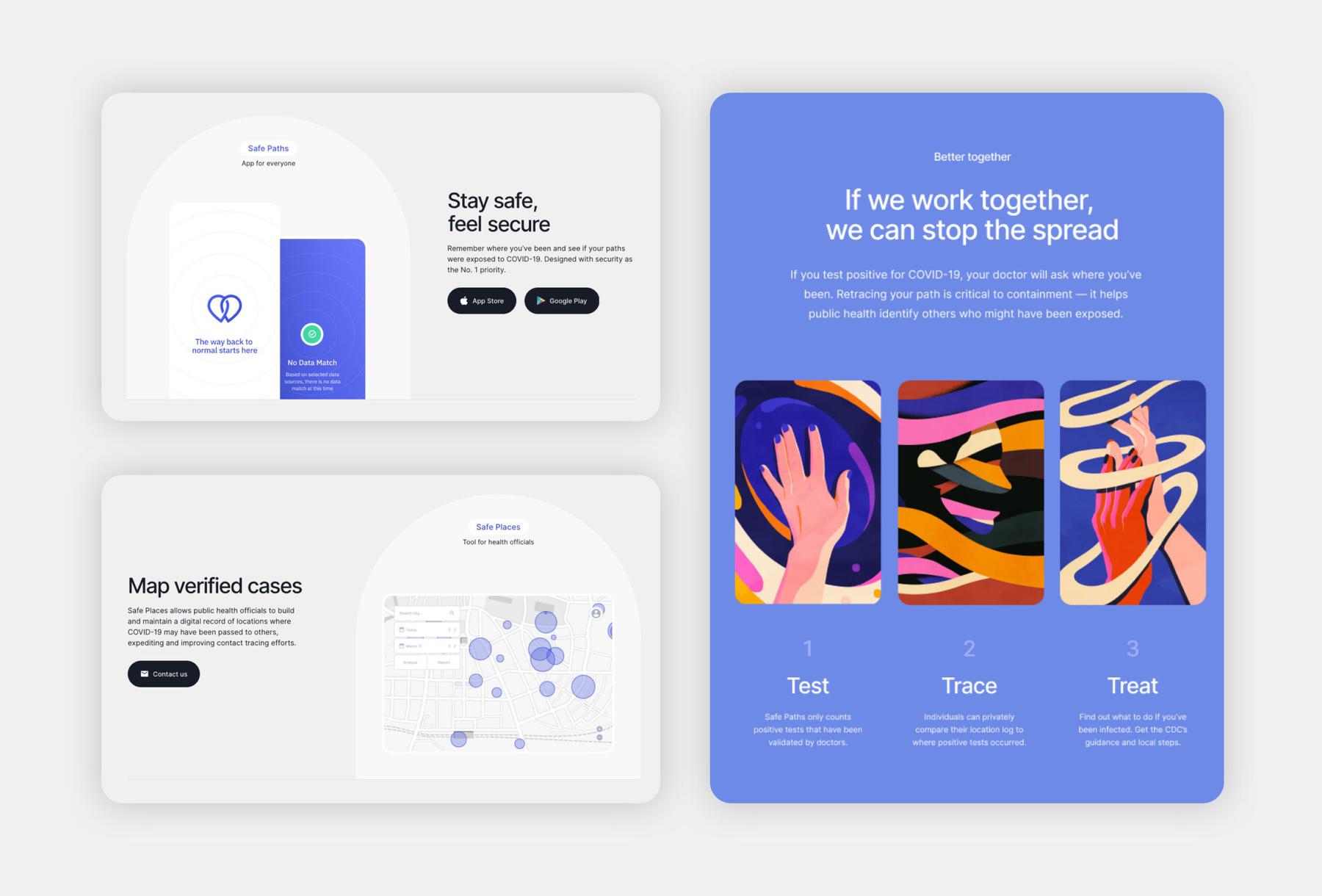
💡 The Solution: If you build it, they will come
We started by designing, coding, writing all the copy, and relaunching the website—all within the first week. The new version teaches people about contact tracing and shows what makes the PathCheck solution unique.
To explain the software, we had to go deeper on the app itself. During that process, we realized the product team would benefit from a clear design vision that combined all the proposed features into a cohesive consumer application.
So, building on our initial design system, we quickly created a clickable prototype—then stood back in awe as it galvanized the volunteer community. Within minutes of posting the updated product MVP in Slack, the engineering team rallied around the new direction and started building it. Rarely have we seen a design materialize so quickly: Within hours, an army of volunteer engineers picked it up, built every screen, and merged to master.
It was inspiring to watch the community come together. And days later, the same script would repeat itself — this time around the brand.
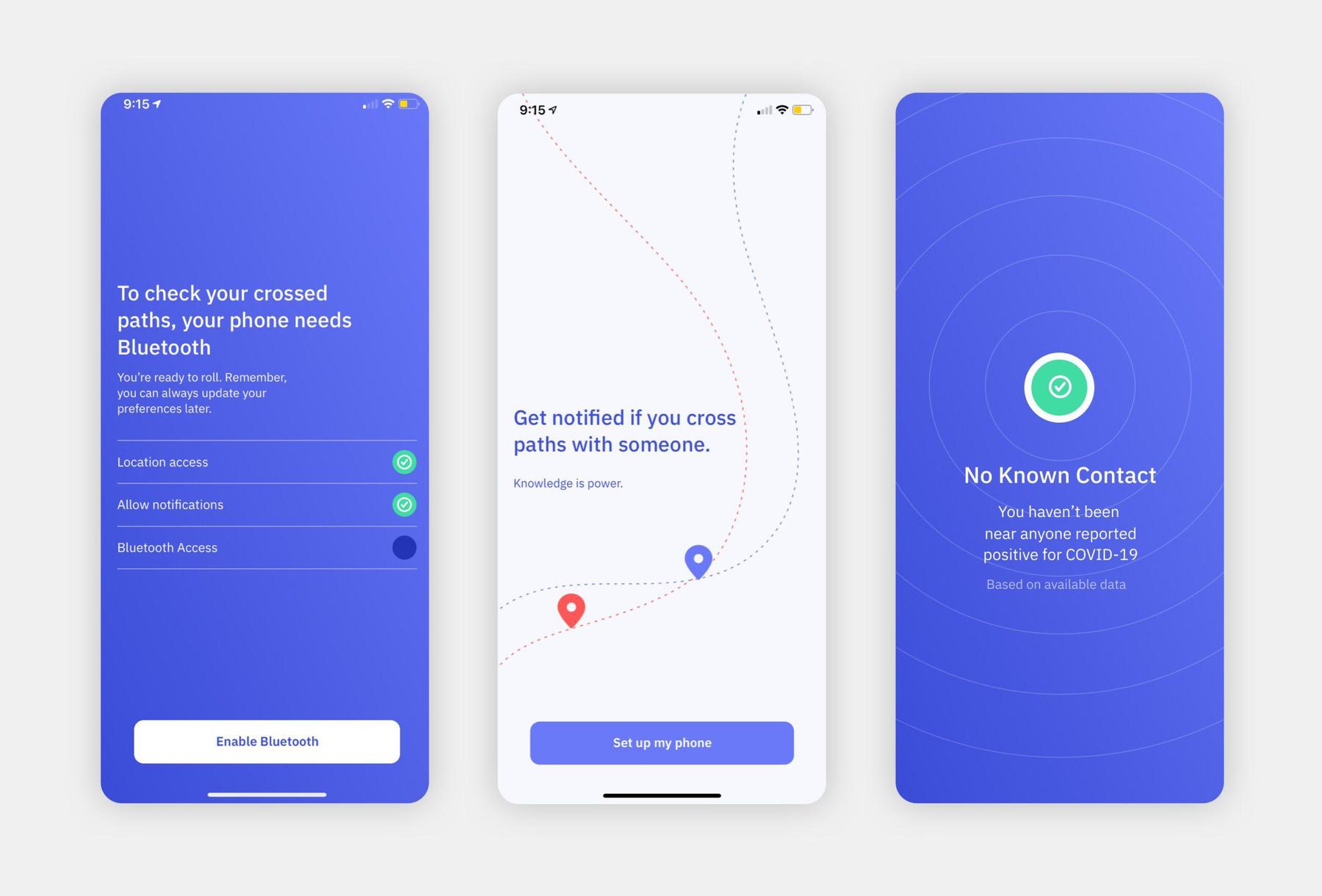
For days, people had been questioning the original name “Safe Paths” because of a trademark question. Eventually, the lawyers determined that we could sidestep any issues by naming it “COVID Safe Paths.” But with all that focus on the name, everyone ignored the logo. And at the 11th hour, we discovered that the old icon bore a striking resemblance to the other Safe Paths, the one central to the trademark question.
So we sprang into action, enlisting several designers from our brand team to develop new logos. Within 12 hours, we had designed the new logo, posted it for approval, and watched it propagate across every social channel, deck, and official document.
This is moving at the speed of the moment.
Because in times like this, speed matters. One of the fastest ways to reach consensus and inspire action is for everyone to see the same thing. In this case, a strong design vision helped unite a huge group of volunteers who had never worked together before. Hopefully it helps us achieve a safe, secure, private solution that much faster.
Coverage & Credits
- Wired: Clever Cryptography Could Protect Privacy in Covid-19 Contact-Tracing Apps
- MIT Technology Review: A new app would say if you’ve crossed paths with someone who is infected
None of Upstatement’s contributions would be possible without the amazing technology at the core of PathCheck and our fabulous collaborators (far too many to name here but especially Greg, Kristen, Steve, Alina, Sanford, and Tim) who developed a vision, cultivated partnerships, and brought this important initiative to life.
What’s Next
This is just the first iteration of PathCheck. There’s lots of work ahead and we expect many changes as the product matures and learns from its users.
Because we believe in the cause, Upstatement has poured weeks of pro bono work into helping get this noble effort off the ground. While we hope to continue to providing product vision and brand direction, we’re not sure yet what the future holds. No matter what, we believe in the effort and will continue to do what we can to push it forward!
